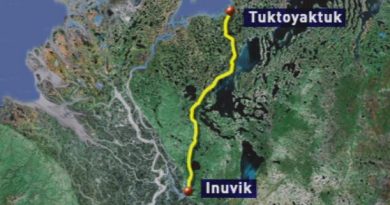Seabirds signal climate change in Nordic regions
 Nature conservationists, hunters and seabird researchers across the Nordic region agree: the Nordic region’s seabirds are impacted by climate change.
Nature conservationists, hunters and seabird researchers across the Nordic region agree: the Nordic region’s seabirds are impacted by climate change.
Migratory birds are staying in Sweden through the winter, and certain bird species are moving farther and farther north in the country. The warmer climate and milder winters are believed to be contributing factors.
Johan Elmberg is a professor of animal ecology at Kristianstad University and one of the participants in the Nordic Waterbirds and Climate Network (NOWAC) conference. NOWAC comprises seabird researchers from all over Europe.
He says that seabirds have changed their behavior in a relatively short period of time.
“This really emphasizes the importance of seabirds in relation to climate change. Seabirds—ducks, geese and swans—are reacting to these changes incredibly quickly. For example, they’re changing their migratory habits because of the climate,” Elmberg says.
He cites the example that 30 years ago, about 95 percent of Sweden’s migratory greylag geese flew to France and Spain. Now the majority of them stay in Sweden, so in less than one human generation and a few generations of geese, the greylag goose has completely changed its migration strategy.
“Changes in hunting pressure follow in turn, and they may be exposed to other kinds of environmental toxins, so it’s an extremely complex scenario. This further emphasizes the importance of managing these birds and trying to understand them from an international perspective,” says Elmberg, who is a member of the international network NOWAC.
Bird populations declining in some areas
In addition to seabird researchers from across Europe, NOWAC is also a network for hunters, government agency representatives and nature conservation organizations.
Hunters are also interested in following the changed behavior of seabirds, affirms Niklas Holmqvist of the Swedish Association for Hunting and Wildlife Management (Svenska Jägareförbundet).
“Many waterfowl are huntable and if they disappear, that’s the end of hunting; it’s that simple,” says Holmqvist.
Access to three of the key seabird species has reduced dramatically.
Velvet scoter numbers have declined; eider presence in the Baltic Sea has halved in 20 years, and long-tailed duck numbers have decreased by more than 65 percent.
Even though the agricultural change to autumn sowing in southern Sweden means there is more food in the fields in autumn, so birds are therefore staying rather than flying farther south, climate change still plays a major role.
“For certain species, this appears to be an extremely important factor, which is especially evident when a species moves along its northern border,” says Holmqvist. For example, ducks in the Swedish mountains that are adapted to that climate are affected, because red fox are coming up to the bare mountain region and eating the duck eggs or ducklings.
Altered migration patterns
“There are so many changes. Many species’ spring migrations are starting earlier and earlier, and many are also choosing to stop migrating; when it gets warmer, they simply stay put. Ducks migrate until they find a better climate; they are not like other species that follow a predetermined map. They move until they feel they’ve found somewhere they can live, and then they stay there,” says Holmqvist.
Several dabbling ducks, such as the widgeon, are choosing not to migrate as far south as they have in previous winters.
“15 or 20 years ago, the widgeon was really unusual in southern Sweden in winter. Today there are flocks of 15 to 20,000 that stay for the winter,” Holmqvist says.
Johan Elmberg emphasizes that it is crucial that involved regulatory authorities understand the importance of researchers’ observations. Rapid changes in the birds’ behavior are warning signs that all is not right.
“I want to underscore that ducks and geese give such clear and early signals of climate and other environmental changes that they can be useful for public authorities and official nature conservation efforts. These warning signs are worth taking seriously, because if things happen with them quickly, then a lot more is going on,” Elmberg says.



